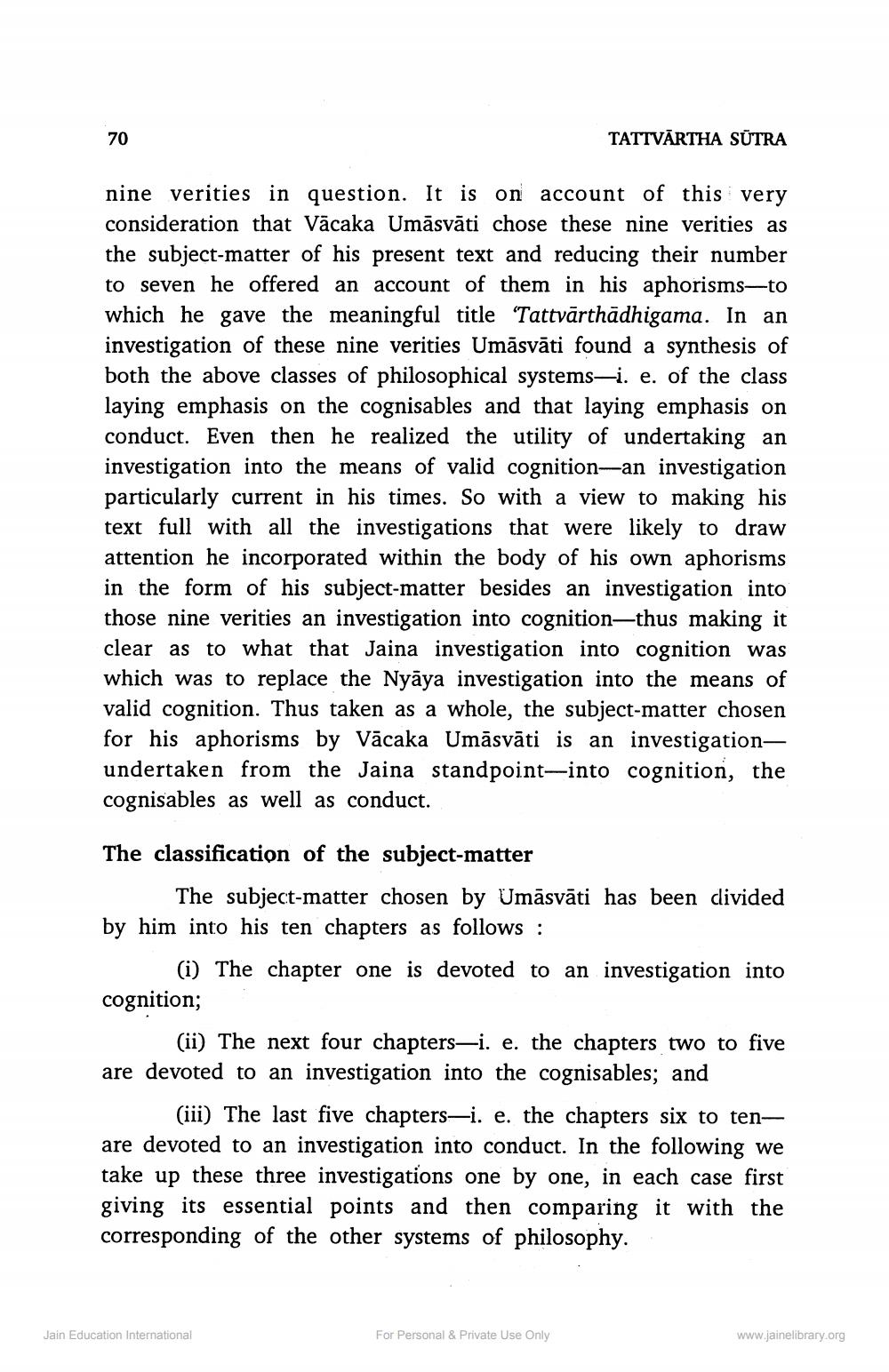________________
TATTVĀRTHA SŪTRA
nine verities in question. It is on account of this very consideration that Vācaka Umāsvāti chose these nine verities as the subject matter of his present text and reducing their number to seven he offered an account of them in his aphorisms—to which he gave the meaningful title 'Tattvārthādhigama. In an investigation of these nine verities Umāsvāti found a synthesis of both the above classes of philosophical systems—i. e. of the class laying emphasis on the cognisables and that laying emphasis on conduct. Even then he realized the utility of undertaking an investigation into the means of valid cognition-an investigation particularly current in his times. So with a view to making his text full with all the investigations that were likely to draw attention he incorporated within the body of his own aphorisms in the form of his subject matter besides an investigation into those nine verities an investigation into cognition—thus making it clear as to what that Jaina investigation into cognition was which was to replace the Nyāya investigation into the means of valid cognition. Thus taken as a whole, the subject-matter chosen for his aphorisms by Vācaka Umāsvāti is an investigationundertaken from the Jaina standpoint-into cognition, the cognisables as well as conduct.
The classification of the subject-matter
The subject-matter chosen by Umāsvāti has been divided by him into his ten chapters as follows:
(i) The chapter one is devoted to an investigation into cognition;
(ii) The next four chapters—i. e. the chapters two to five are devoted to an investigation into the cognisables; and
(iii) The last five chapters—i. e. the chapters six to tenare devoted to an investigation into conduct. In the following we take up these three investigations one by one, in each case first giving its essential points and then comparing it with the corresponding of the other systems of philosophy.
Jain Education International
For Personal & Private Use Only
www.jainelibrary.org




